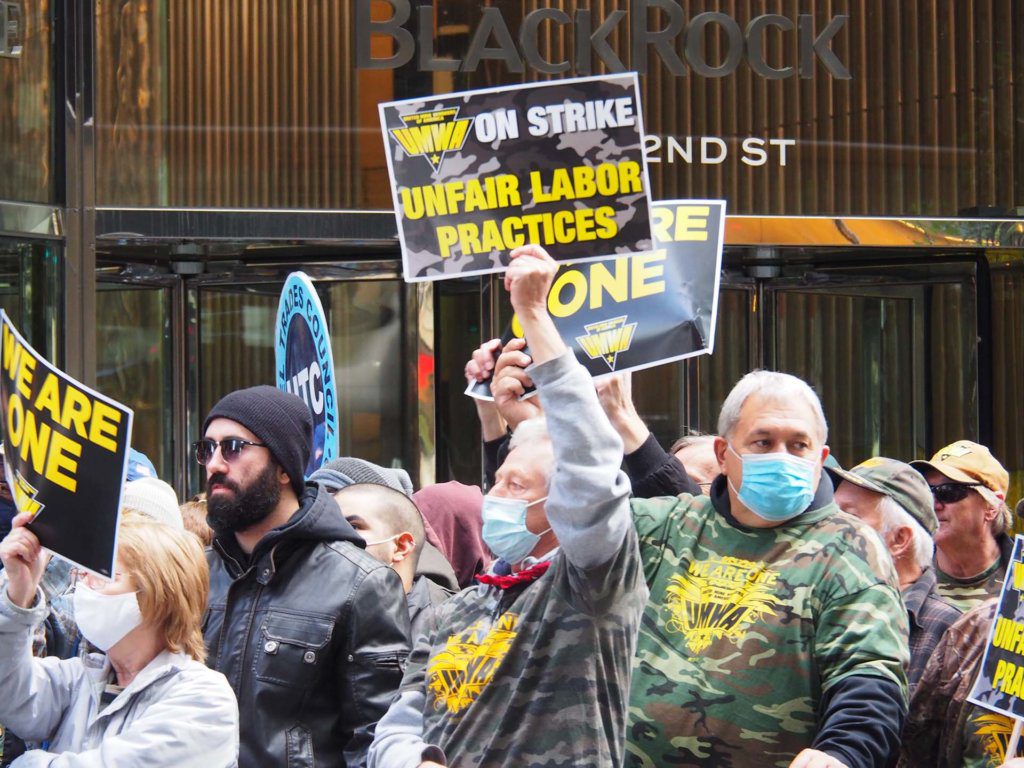February 18, 2022
Source: Patch.com
Here’s an in-depth look at how ongoing business practices have impacted striking blue-collar workers for one west Alabama coal producer.

BROOKWOOD, AL — There’s a little wooden shelter at the intersection of Lock 17 Road and Miners Memorial Parkway in Brookwood that sat vacant on Friday. The site, which is scattered with weathered black and yellow picket signs supporting the United Mine Workers of America (UMWA), was silent save for the bustle of traffic.
Severe storms had done a number on the picket line, which had been active for 325 days as of the publication of this story. The site’s portable toilet had been blown over by the wind and some of the ground signs were upended.
The empty picket line also stood in stark contrast to the operations directly across the road in the seemingly-busy offices of Warrior Met Coal.
But it was around the same time this reporter was leaving the site that Braxton and Haeden Wright, along with numerous other striking UMWA members, prepared to board a flight back to Alabama from Washington, D.C.
The purpose of their visit was the invitation to testify on the strike before the Senate Budget Committee on Capitol Hill, with discussions focused on the role had by massive private equity firms on workers at companies like Warrior Met Coal, along with potential legislation to wrangle in the extravagantly-wealthy firms.
As the strike nears its one-year mark, Patch took an in-depth look at the events that culminated in hundreds of dedicated coal miners walking off the job to fight for better pay and treatment.
‘Like Russian Roulette With Bills …’

Braxton Wright has worked at the mine in Brookwood for nearly two decades and is from a proud mining family. He was also one of more than 1,000 union employees of Warrior Met Coal to go on strike last April after negotiations fell through on a high-stakes collective bargaining agreement.
Since then, the union has held weekly rallies at Tannehill State Park, along with picketing the company’s offices in Brookwood and those of its largest shareholders in places like New York City. UMWA leaders have also reportedly turned down a total of nine attempts at a compromise on the part of the publicly-traded metallurgical coal supplier, with the union insisting that only minor words had been changed.
The surrounding community is overwhelming in support of the striking miners, with the local high school football team even sporting pickaxe stickers on their helmets last season in a show of solidarity. But the last year has not been an easy one, as families throughout west Alabama have seen their budgets squeezed due to loss of income from the strike. This is a problem compounded by soaring inflation and supply chain issues that have provided little reprieve.
“It’s been difficult,” Wright responded when asked by Democratic Sen. Bernie Sanders to explain his family’s situation. “We’ve had to cut back on non-necessary items. We don’t get to go out maybe as much as we used to. Vacations are cut off or ended … My wife was sick and her pay was even cut out for a month. It was kind of like Russian Roulette with bills. You throw them out on a table and pick out which one you’re going to pay at the time.”
He went on to say that while many of the striking miners have picked up other jobs or found ways to make ends meet, it’s nothing close to the same level of financial security their families had been accustomed to. Coal mining salaries do offer the chance at a comfortable existence, but the trade-off comes in the long hours and inherent dangers of the profession.
“It’s difficult to tell your children that you can’t do things because you’re not at work right now, that you’re on strike,” Wright said.
Indeed, the last year has been one of the hardest for many families, but as UMWA International President Cecil Roberts argued during the committee hearing, the problems facing miners in Brookwood are historic in nature and date back to the business practices that ultimately forced its previous incarnation — Walter Energy — to file Chapter 11 bankruptcy in 2015.
In the aftermath of the bankruptcy, which was due to a financially-overextended company in a metallurgical coal market that had gone belly-up due to a range of factors, it would be two outside private equity firms, Apollo Global Management and Blackstone, to lead the charge to profit from the restructuring.
And where two vultures are circling, more are almost always sure to follow.
Their efforts were more than successful, too, with both firms scoring massive profits and selling all of their shares by 2019. What wasn’t understood at the time, however, was how this would open the door to a revolving cast of private equity firms to buy huge portions of shares, before cashing out profits once the per share price gets high enough. It’s a common practice, as pointed out during the Senate hearing, and one that allows behemoth investors to exert unmitigated influence as majority shareholders.
That’s not to say turnover is prevalent in the boardroom at Warrior Met. In actuality, it often goes overlooked that Warrior Met Coal CEO Walt J. Scheller has held the company’s top job since 2011, weathering its bankruptcy, restructuring and the current strike. It would be months before his promotion that Walter Energy in April 2011 purchased Canadian coal producer Western Coal for a staggering $3.3 billion — a decision cited throughout its federal bankruptcy hearings as the fatal misstep that drove the company to bankruptcy when the bottom eventually fell out of the metallurgical coal market.
And after the company brand was changed to Warrior Met Coal, a new collective bargaining agreement was reached that UMWA said left them little in the way of options. But, in a show of good faith and to help save their jobs, union miners agreed to a 20% pay cut for the five-year term, which came in the range of $6-$8 an hour for employees, depending on their pay grade.
As Roberts explained on Capitol Hill Thursday, these concessions by UMWA members resulted in $1.1 billion in savings for the company and is widely-lauded as the component of Walter Energy’s restructuring that saved the company. During these trying five years, miners labored under the impression that their pay and truncated benefits would be restored once the company had returned to profitability. But it wouldn’t happen.
It’s important to note at this point that, during these lean times of pay cuts and uncertainty for employees, Warrior Met Coal returned to the New York Stock Exchange as a publicly-traded company in 2017 and has gone on to pay out more than $1 billion in dividends to shareholders. Of these profits, the vast majority went to large private equity firms that Sanders argued might wield more influence than the president of the United States.
Then, in April 2021, that five-year collective bargaining agreement was set to expire. However, the deal presented by Warrior Met Coal at the bargaining table was met with overwhelming opposition by the union members affected. For instance, as it stands, the company has been unwavering in its offer of a $1.50 hourly pay raise phased in over the five years of the proposed deal, falling well short of bringing the take-home pay of miners to levels prior to the previous labor agreement.
The measure has been put to a UMWA member vote only once since the strike began, failing 95-5 in a show of solidarity from the coal miner’s union.
But on Capitol Hill Thursday, the political divides were visible in the protracted labor strike and show just how difficult shoring up outside support can be, even among policymakers in Alabama.
‘A moment of unprecedented corporate greed’

Former Democratic presidential candidate and longtime Vermont Senator Bernie Sanders chairs the Senate Budget Committee and, along with his Senate colleague Elizabeth Warren, has been a vocal proponent for labor rights and an ardent supporter of unions like UMWA.
Sanders presided over the hearing Thursday, making it clear that the goal was to highlight the practices and influence of private equity firms, in addition to the impact had on the blue-collar workers they employ. The entire discussion was backdropped by the UMWA strike in Brookwood, which many view as a case study in the need for reform.
“What is happening at Warrior Met is not an aberration,” Sanders said. “At a moment of unprecedented corporate greed in this country, attacks against workers are taking place in company after company, industry after industry. Here is a dangerous reality: never before in the history of the United States have so few owned so much and had so much power over our economy.”
To underscore his point, Sanders then said three companies — BlackRock, Vanguard and State Street — own upwards of $22 trillion in assets. This amount is nearly equal to the country’s Gross Domestic Product (GDP) and more than five times higher than the GDP of Germany.
He claimed these companies present themselves as passive investors not involved in the day-to-day decision-making of the companies they partially own. However, the liberal senator went down a long list of industrial and business sectors where the firms do wield considerable influence as majority shareholders.
Medicine. Transportation. Health care. Commodities. Manufacturing. The list goes on and truly underscores the power in the hands of just a few companies.
For instance, Sanders said the three aforementioned private equity firms are major shareholders in more than 96% of all S&P 500 companies — the absolute best of what’s available on the stock market.
This scope of influence also includes Warrior Met Coal, as two of the largest firms are also the company’s two biggest shareholders.
According to the latest available financial data, BlackRock Fund Advisors owns 6.7 million shares in Warrior Met Coal, representing a 13.22% shareholder stake in the company. This makes BlackRock the largest shareholder in the company, with its stock options valued at $178 million.
BlackRock is trailed by The Vanguard Group, Inc., which owns approximately 12% of the Warrior Met shares available — a total that carries an estimated sales price of $159 million. And when looking at the next eight largest shareholders of Warrior Met Coal, another 25% of the company’s stock options are owned by a range of investment firms and holding companies.
State Rep. Chris England, a Democrat from Tuscaloosa, has been one of the few area lawmakers to publicly lend his support to the strike. In a statement to Patch, he expressed his distain for the business practices that led to the Brookwood-based coal supplier cutting the pay for its employees and trying to starve out the union.
“It is extremely hard for me to believe that a company making record profits won’t come to the table and negotiate a fair contract with better wages and benefits for the very people that helped save it from bankruptcy,” he said on Friday. “It is even harder for me to believe that Alabama elected officials have been silent on a year-long strike, which essentially means they are siding with an out of state private equity firm over Alabama’s workers.”
On Capitol Hill, Sanders mentioned that both Scheller and BlackRock CEO Larry Fink were invited to testify before the Senate Budget Committee on Thursday, but did not show.
However, Alabama Republican U.S. Sen. Tommy Tuberville, in his first term in Congress, was in attendance and armed with skepticism. His primary argument focused on the actual authority of the committee, going on to say it’s not the place of Congress to get involved in labor disputes between labor unions and companies.
“It’s clear the purpose of this hearing is for the majority to push a political agenda,” the former Auburn football coach said. “This hearing is what I call the ‘Dream Democrat Political Parlay,’ where members can be pro-union, anti-Wall Street and anti-mining production, all in one hearing.”
Tuberville has shied away from expressing any support or lending involvement to the large-scale strike in the state he represents. The junior senator also went so far as to mention the average miner salary as being an attractive one, even with the current pay cuts still in place from when the collective bargaining agreement was renegotiated following Walter Energy’s bankruptcy.
“The jobs at Warrior Met Coal pay an average wage of over $97,000 annually,” he said. “This is one of the top average wages in the state. Since Warrior Met was established in 2016, it has created an additional 600 jobs.”
One data point Tuberville conveniently overlooks, though, can be seen in the extravagant bonuses paid out to Warrior Met executives, even during a time of crisis when many of its striking employees had to rely on the generosity of the community and the deep, but limited, pockets of the UMWA.
For instance, CEO Walt J. Scheller received an annual bonus of $4 million during the last contract term, all while employees agreed to work long hours for less pay. And, in an interesting contrast, this bonus, by itself, is nearly equal to the $4.3 million in aid that has been distributed to date by UMWA to its members on strike in Brookwood.
“No entity should have that kind of power delegated to them by the laws that were passed in this location we’re sitting,” UMWA’s president said in an impassioned response. “Bankruptcy laws are horrendous for working class people.”
Indeed, the true human toll exacted by the business practices of private equity firms and the boardrooms they control at companies like Warrior Met can be seen in the stories told by UMWA members on the picket line. People like Braxton Wright.
“When you’re required to work 12 hours a day, 6-7 days a week, you’re lucky to see your spouse or children more than a few hours a day,” he told the committee. “Spouses used to not have to have second jobs or work at all. The children saw both parents less as a result of the cuts and the bankruptcy contract … Knowing my child deserved to have time with both parents, these have been the voices of hundreds of children whose parents work at Warrior Met.”
And it’s this impact in the home that represents another easily-overlooked aspect in the 11-month battle for a fair labor contract both sides can agree on.
Wright then explained the company’s disturbing “four strike” policy for absences and showing up late to work. It’s a simple and straightforward requirement, but one that fails to factor in the nuanced realities of everyday life for its employees. It also stands as a sterling example of a company culture fostered by years of millionaires in corner offices asking their hardworking employees to do more for less — all while large shareholders rake in profits and cash out once the getting is good.
For instance, if a Warrior Met Coal employee shows up a couple of minutes late, they are given a strike and still have to work a full shift. The employee is terminated outright following the fourth violation.
“My brothers and sisters have been given strikes for having accidents on the way to work and being late,” Wright said, his voice full of emotion. “Our spouses learned not to call and tell us about accidents or emergencies until after we were done with our shift, out of fear of us receiving a strike.”
These are more than passing anecdotes for Wright, who was working 12-hour overnight shifts when his daughter was admitted to the hospital.
“My wife was afraid to tell me she had been admitted until my shift ended at 7 (a.m.), because, if I left, she knew I would receive a strike. I worked my shift in Brookwood, then drove to the hospital and then drove back to the mines. Back and forth for three days in order to be with my family.”
Above all, though, the entire argument from Wright and UMWA comes down to fairness.
“They exploit our work,” Wright said. “They work us on skeleton crews with less than what we had before the strike, but then we have to watch them sit in the office and make $4 million a year or $1.2 million a year as a secretary, and say we don’t deserve what we make now.”
Written by: Ryan Phillips
ryan.phillips@patch.com.
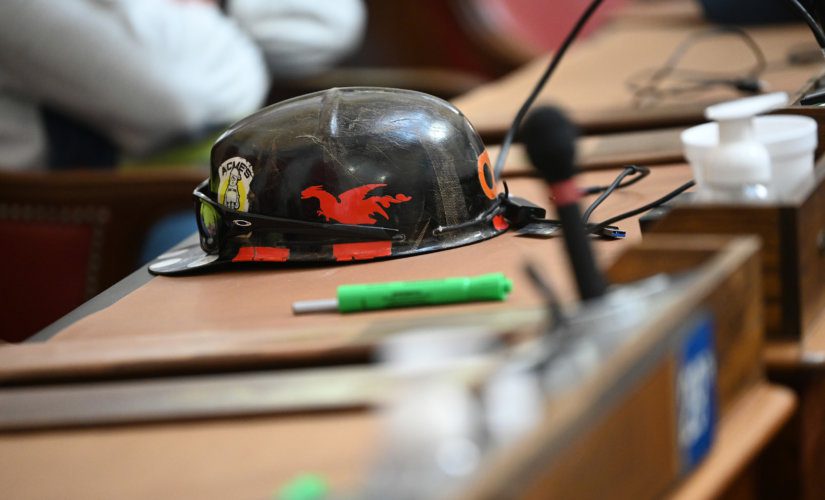
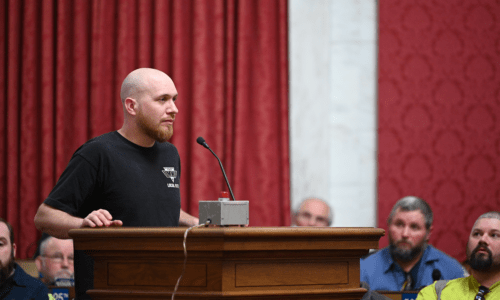
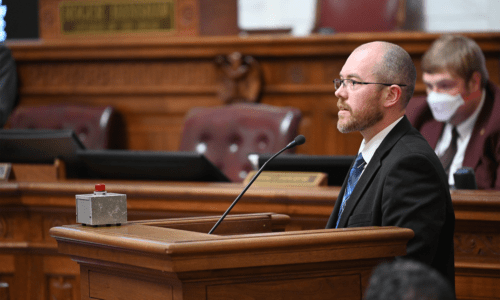

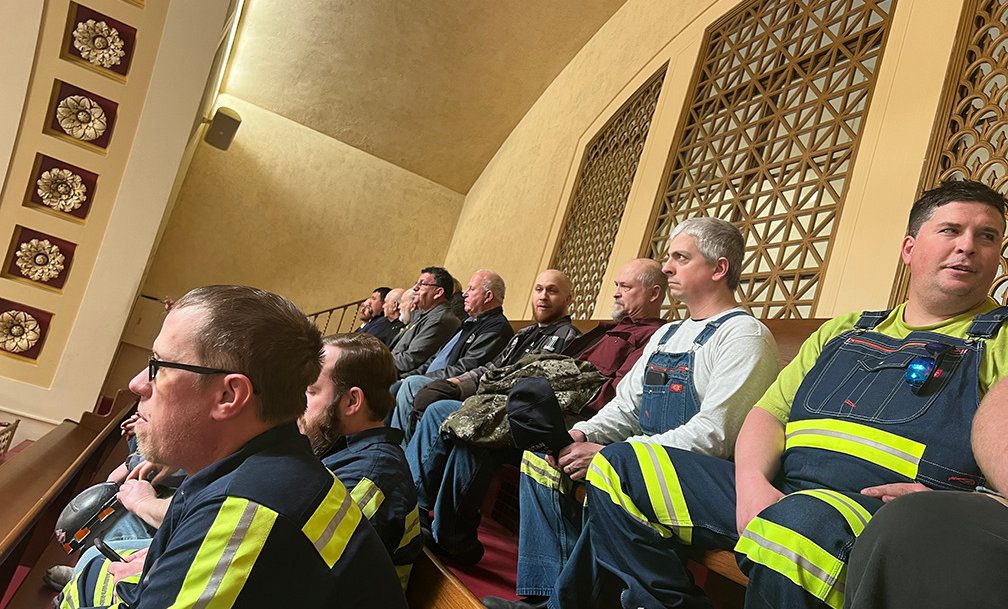
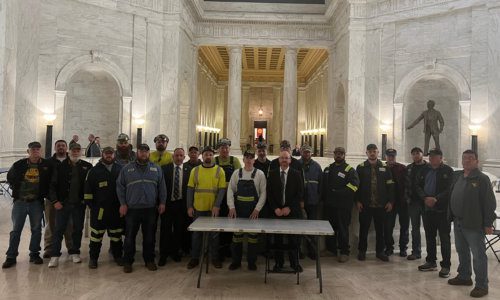
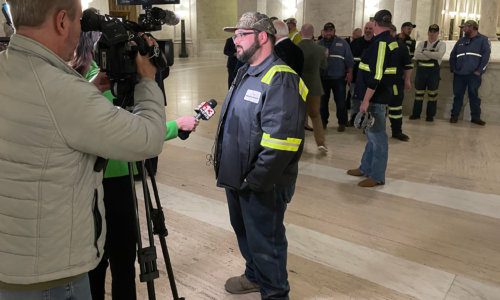
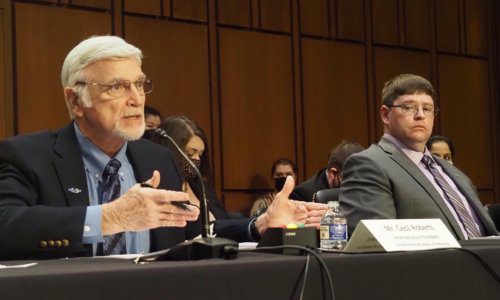
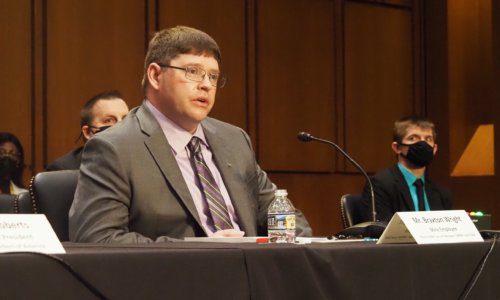
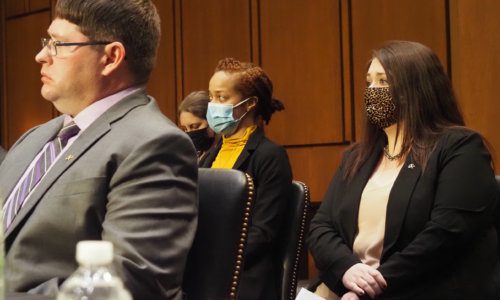

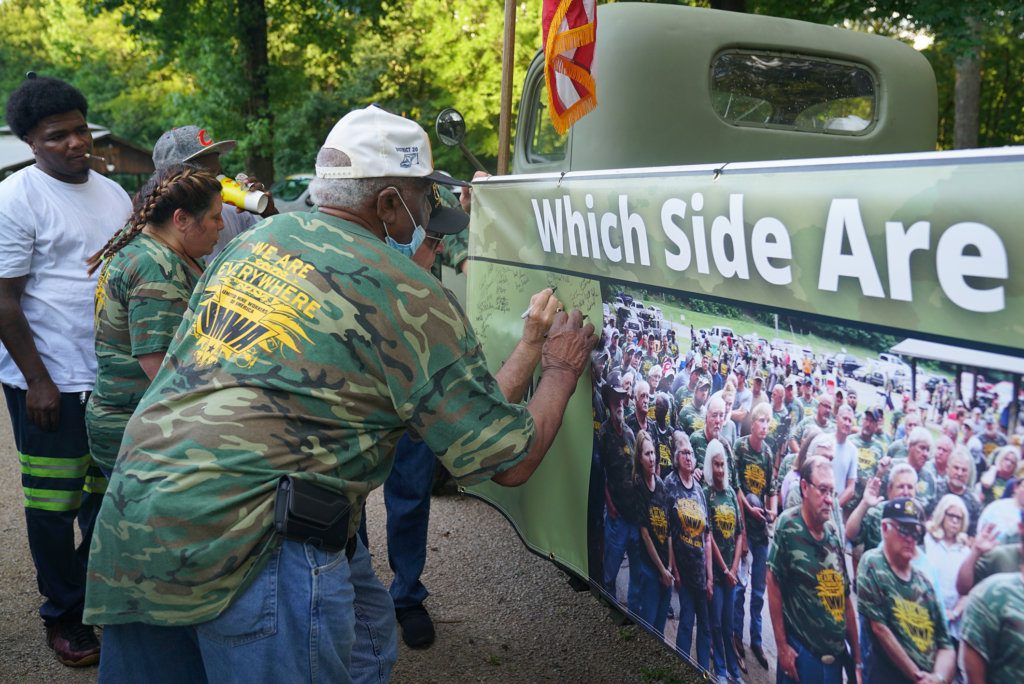


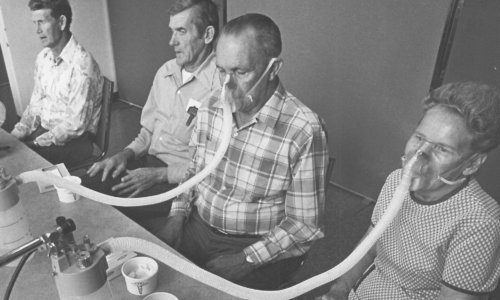 “The Black Lung Benefits Disability Trust Fund Solvency Act of 2022 substantially reduces that risk by protecting the long-term sustainability of the Trust Fund, while ensuring that the coal industry does not shift the cost of benefits. Given the recent rise in the most severe form of black lung disease, Congress must take action to secure future benefits and health care for disabled miners.”
“The Black Lung Benefits Disability Trust Fund Solvency Act of 2022 substantially reduces that risk by protecting the long-term sustainability of the Trust Fund, while ensuring that the coal industry does not shift the cost of benefits. Given the recent rise in the most severe form of black lung disease, Congress must take action to secure future benefits and health care for disabled miners.”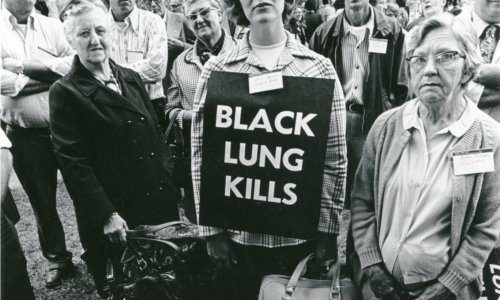
 Due to congressional inaction, however, on December 31, 2021, the tax rate reverted to $0.50 per ton on underground coal and $0.25 per ton on surface coal—a 55 percent reduction. Congressional failure to renew the tax rate will cost the trust fund an estimated $2.6 million per week.
Due to congressional inaction, however, on December 31, 2021, the tax rate reverted to $0.50 per ton on underground coal and $0.25 per ton on surface coal—a 55 percent reduction. Congressional failure to renew the tax rate will cost the trust fund an estimated $2.6 million per week.

